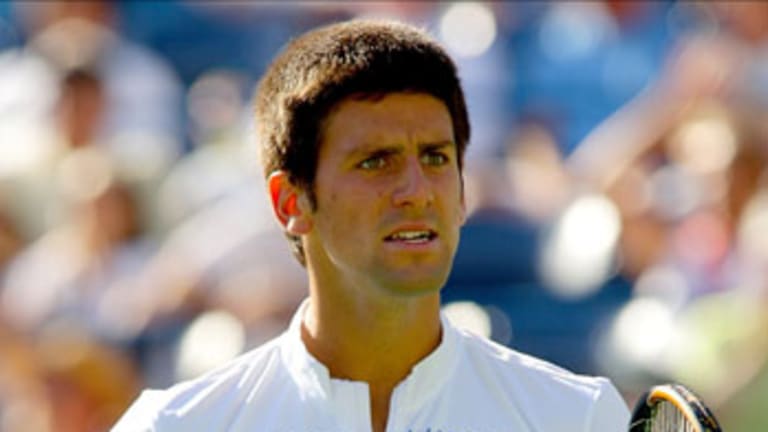It took me a while to discover where the guttural cries were coming from. The sounds in the air during the women’s final between Ana Ivanovic and Svetlana Kuznetsova were incomprehensible, but consistently so: something like “sorb-ee-yhuh!!!” was being hollered over and over, at different pitches and volumes. Then I glanced up to the very top of Indian Wells’ Stadium 1 and understood. There a small pack of wild youths had taken over a section of the cheap seats and unfurled the red, blue, and white flag of Serbia (“sorb-ee-yhuh!!!”). A few glances later I noticed a second, smaller, black flag beneath them that read, “Kosovo is Serbia.”
The soccer-match intensity and nationalist fervor was jarring in an arena filled with the docile, golf-hatted tennis fans of California. Needless to say they weren’t going to be any match for the Serbs, even if some of them harbored a deep, previously unrevealed passion for Kuznetsova. It was also hard to connect the Serbian fans with the object of their affections at the bottom of the stadium. Ana Ivanovic’s personality can be described in many ways, but “guttural” is not one that comes immediately to mind.
That doesn’t mean she isn’t tough. You know how some athletes are described as “sneaky fast”? Ivanovic is “sneaky tough.” Her walk is delicate, her speech guileless, her fist-pump less-than-terrifying, and she’s wilted under pressure in the past. Today Ivanovic played a cagey match, a scrappy match, a veteran match. When she missed, she went right back with a big shot in the same direction; if that didn’t work, she bailed herself out with clutch serving. She took her time between points and never looked anything other than composed, even at her worst moments.
After another scratchy, momentum-less, hit-and-miss start—is this an Ivanovic specialty?—the Serb decided to take a step forward and create a little momentum at just the right moment. With Kuznetsova serving at 4-4, Ivanovic let fly with a backhand winner for 15-30, drilled a forehand winner for 30-40, and then moved into the court and put together a pretty one-two forehand combo, first crosscourt and then down the line for the break. It was the first moment of strategic focus in the match that had been sustained for longer than a single point.
Contrast it with the play of Kuznetsova, who, as you may have heard, has now lost eight of her last nine finals. This was the first time I’d watched her at length this week, and I’d forgotten how messy her game can be. Nobody makes as many athletic moves as Kuznetsova; the problem is, she makes so many of them in the wrong direction. How many times have you seen her go for the corners while falling backward or sideways onto her back foot. She always seems to be in her own version of no man’s land; she has the shots to dictate every point, but she never settles down and takes over the center of the court, which is what Ivanovic did at 4-4 in the first.
We’ve learned three things about Ivanovic this week: She can win a big tournament as a No. 1 seed and favorite; she’s entrenched herself at No. 2 in the world; and, most important, she’s learning, rapidly, how to win. That doesn’t just mean hammering winners at 4-4. It means saving a break point with a service winner, getting a return in the court at 30-30, and following up a break by winning the first point of the next service game, which Ivanovic did at 5-4 in the first set. She went on to hold at love and never lost focus after that.

